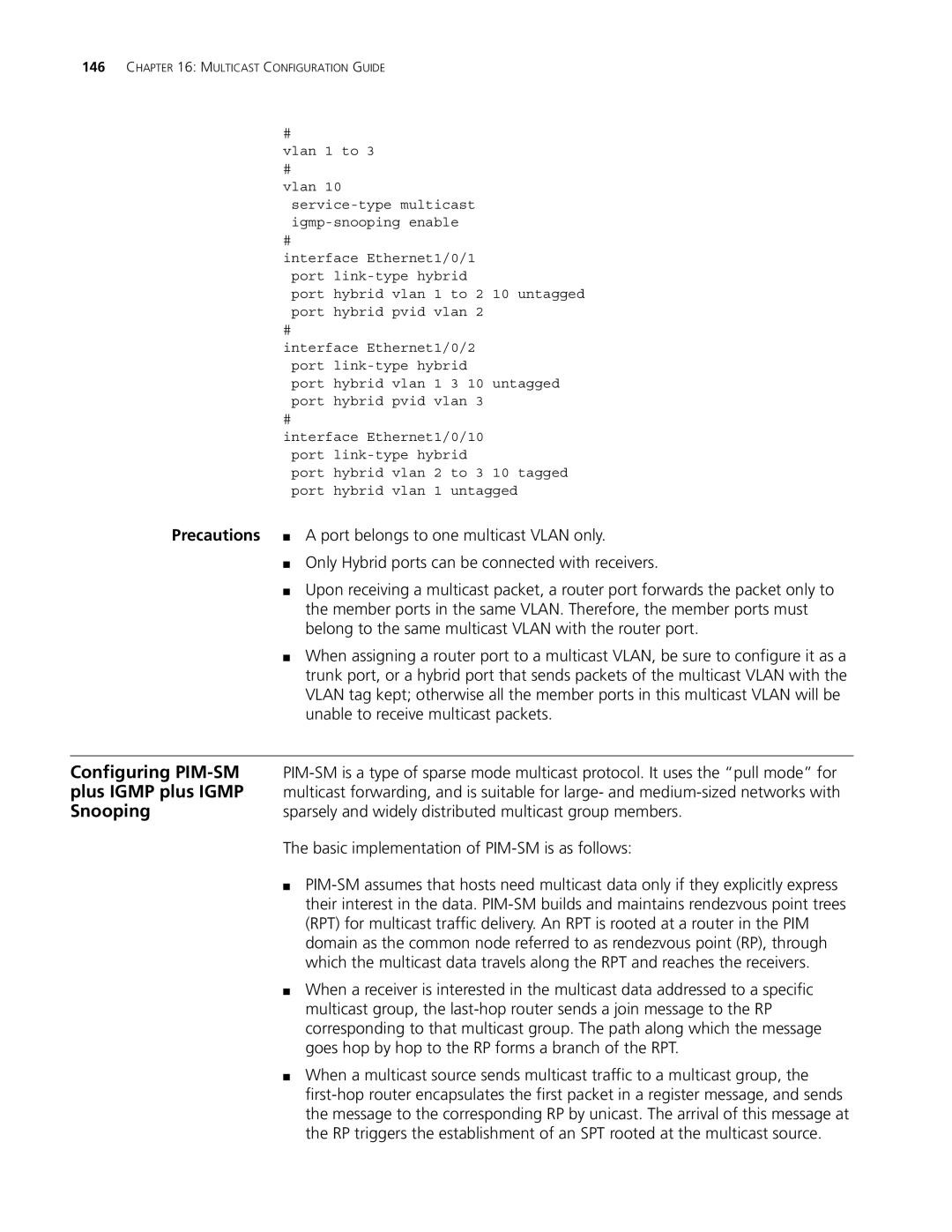146CHAPTER 16: MULTICAST CONFIGURATION GUIDE
#
vlan 1 to 3
#
vlan 10
#
interface Ethernet1/0/1 port
port hybrid vlan 1 to 2 10 untagged port hybrid pvid vlan 2
#
interface Ethernet1/0/2 port
port hybrid vlan 1 3 10 untagged port hybrid pvid vlan 3
#
interface Ethernet1/0/10 port
port hybrid vlan 2 to 3 10 tagged port hybrid vlan 1 untagged
Precautions ■ A port belongs to one multicast VLAN only.
■Only Hybrid ports can be connected with receivers.
■Upon receiving a multicast packet, a router port forwards the packet only to the member ports in the same VLAN. Therefore, the member ports must belong to the same multicast VLAN with the router port.
■When assigning a router port to a multicast VLAN, be sure to configure it as a trunk port, or a hybrid port that sends packets of the multicast VLAN with the VLAN tag kept; otherwise all the member ports in this multicast VLAN will be unable to receive multicast packets.
Configuring PIM-SM plus IGMP plus IGMP Snooping
The basic implementation of
■
■When a receiver is interested in the multicast data addressed to a specific multicast group, the
■When a multicast source sends multicast traffic to a multicast group, the
